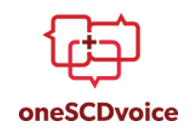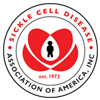Trusted Resources: Evidence & Education
Scientific literature and patient education texts
Hydroxyurea Therapy for Children With Sickle Cell Anemia in Sub‐Saharan Africa: Rationale and Design of the REACH Trial
source: Pediatric Blood & Cancer
year: 2016
authors: Patrick T. McGann, Léon Tshilolo, Brigida Santos, George A. Tomlinson, Susan Stuber, Teresa Latham, Banu Aygun, Stephen K. Obaro, Peter Olupot-Olupot, Thomas N. Williams, Isaac Odame, Russell E. Ware
summary/abstract:Background:
Sickle cell anemia (SCA) is an inherited hematological disorder that causes a large but neglected global health burden, particularly in Africa. Hydroxyurea represents the only available disease-modifying therapy for SCA, and has proven safety and efficacy in high-resource countries. In sub-Saharan Africa, there is minimal use of hydroxyurea, due to lack of data, absence of evidence-based guidelines, and inexperience among healthcare providers.
Procedure:
A partnership was established between investigators in North America and sub-Saharan Africa, to develop a prospective multicenter research protocol designed to provide data on the safety, feasibility, and benefits of hydroxyurea for children with SCA.
Results:
The Realizing Effectiveness Across Continents with Hydroxyurea (REACH, ClinicalTrials.gov NCT01966731) trial is a prospective, phase I/II open-label dose escalation study of hydroxyurea that will treat a total of 600 children age 1-10 years with SCA: 150 at each of four different clinical sites within sub-Saharan Africa (Angola, Democratic Republic of Congo, Kenya, and Uganda). The primary study endpoint will be severe hematological toxicities that occur during the fixed-dose treatment phase. REACH has an adaptive statistical design that allows for careful assessment of toxicities to accurately identify a safe hydroxyurea dose.
Conclusions:
REACH will provide data that address critical gaps in knowledge for the treatment of SCA in sub-Saharan Africa. By developing local expertise with the use of hydroxyurea and helping to establish treatment guidelines, the REACH trial results will have the potential to transform care for children with SCA in Africa.
DOI: 10.1002/pbc.25705
read more full text
Related Content
-
Hydroxyurea in sickle cell patients: A look at the correlation with hematologic malignanciesBackground: Hydroxyurea (HU) is a chemo...
-
Prospective study of sickle cell trait and venous thromboembolism incidenceBACKGROUND: Sickle cell trait may incre...
-
Preventing Strokes in Children with Sickle Cell Diseasehttps://www.youtube.com/watch?v=k6h7cb7S...
-
SCD Patients Receiving Hydroxyurea in the U.S. Still Face Many ChallengesPeople with sickle cell disease (SCD) tr...
-
How to Talk to Your Child About Hydroxyureahttps://www.youtube.com/watch?v=_apTt2j0...
-
Sickle cell gene linked to elevated risk of developing kidney failureNew research indicates that being born w...
-
Hydroxyurea for Children – A HRSA EMBRACE Projecthttps://www.youtube.com/watch?v=LprBMpPb...
To improve your experience on this site, we use cookies. This includes cookies essential for the basic functioning of our website, cookies for analytics purposes, and cookies enabling us to personalize site content. By clicking on 'Accept' or any content on this site, you agree that cookies can be placed. You may adjust your browser's cookie settings to suit your preferences. More Information
The cookie settings on this website are set to "allow cookies" to give you the best browsing experience possible. If you continue to use this website without changing your cookie settings or you click "Accept" below then you are consenting to this.




 +myBinder
+myBinder
